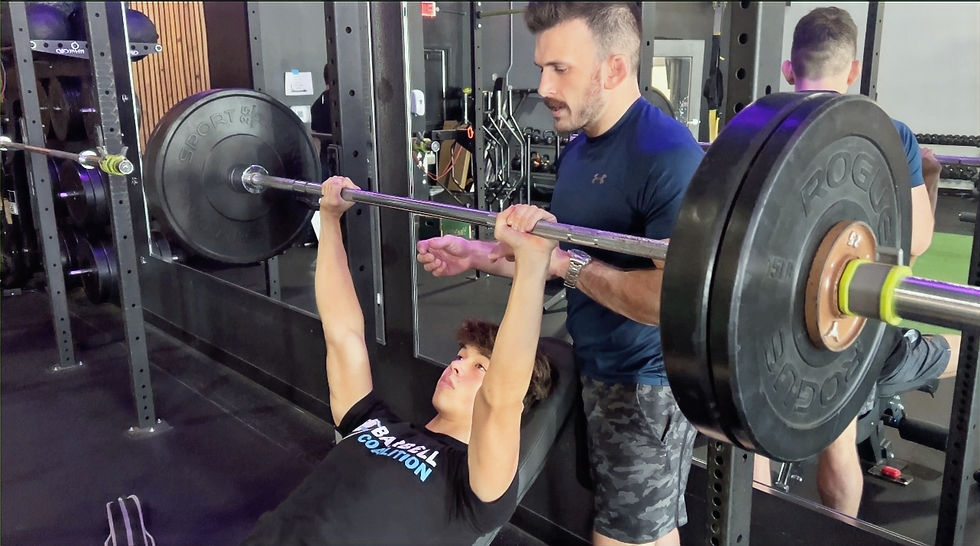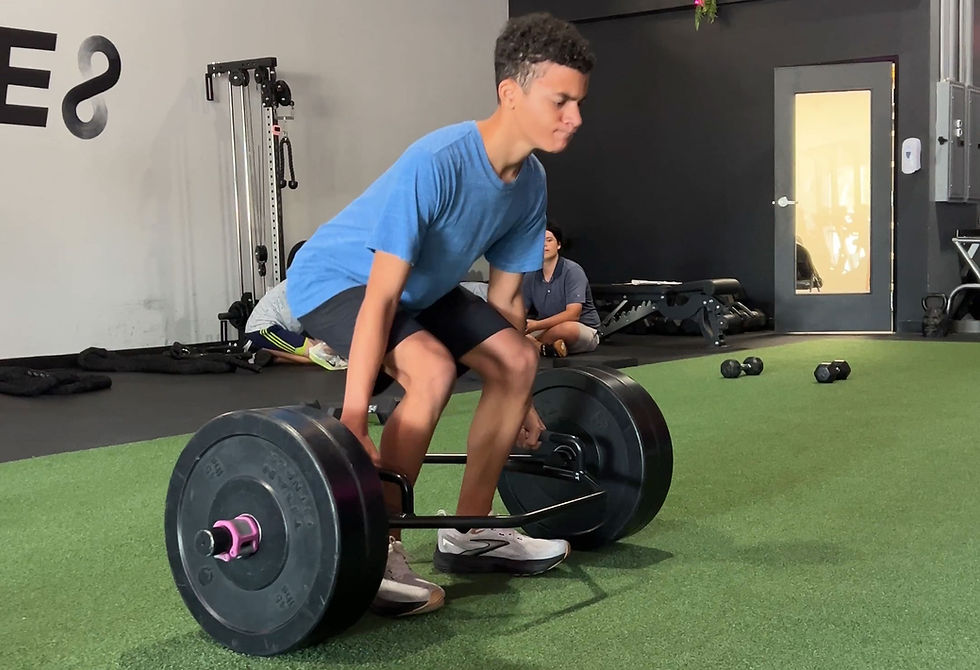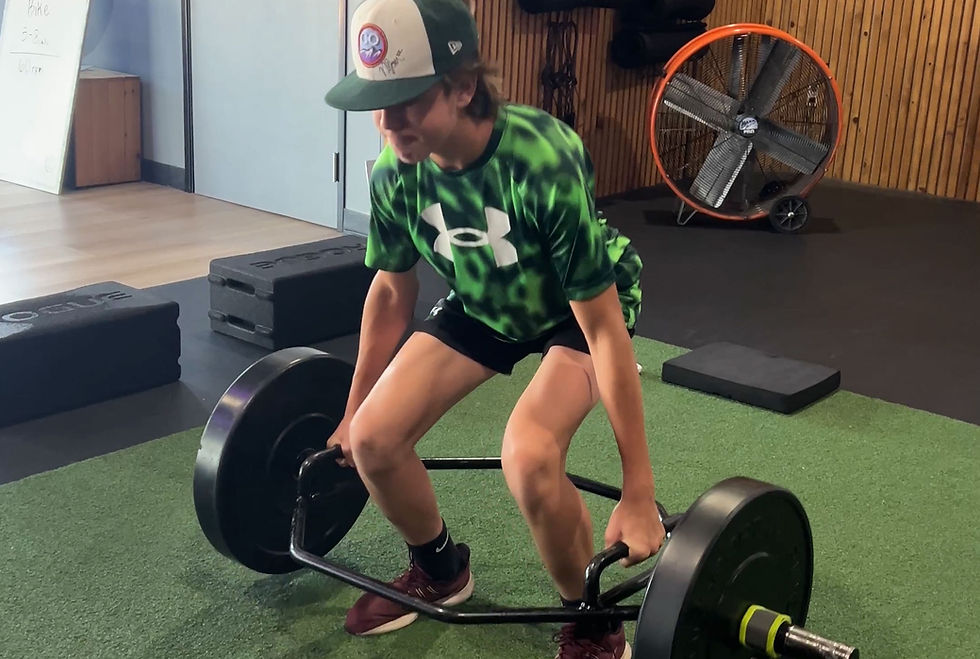Why Strength Training is the Missing Piece for Youth Athletes - Cedar Park Athlete Training
- Ben Lustig
- Aug 11
- 2 min read

Parents: If your young athlete is working hard at practices, games, and maybe even extra skill sessions, it’s easy to think they’re doing everything they need to succeed.
But here’s the truth: Many youth athletes are leaving a huge chunk of their potential untapped—because they’re missing one critical element in their training.
That element? Strength training.
The Problem with Skill-Only Training
Most youth athletes spend 90–100% of their training time on skill work—shooting, passing, hitting, swimming drills, etc.
While this is obviously important, it creates a major gap. Skills are easier to improve when the engine behind them is stronger.
Think about it like this:
A baseball player with more lower-body strength can generate more bat speed.
A soccer player with better core and leg strength can sprint faster and change direction quicker.
A swimmer with a stronger upper body and posterior chain can pull more water with every stroke.
If the foundation isn’t strong, athletes are forced to rely on effort and technique alone, which can only take them so far.

What Strength Training Actually Does for Youth Athletes
Builds Explosiveness and Speed - Strength training increases force production—meaning your athlete can push harder against the ground, jump higher, and sprint faster.
Improves Injury Resistance - Stronger muscles, tendons, and ligaments mean better joint stability and fewer overuse injuries. For example, strengthening the hips and glutes can help prevent ACL tears in young athletes.
Boosts Confidence - When athletes feel physically stronger, it spills over into their mindset. They move with more purpose and aren’t afraid to be aggressive in competition.
Enhances Skill Performance - Every movement—whether it’s a swing, kick, or throw—is powered by strength. Increasing that strength improves the quality and consistency of those movements.
But… Isn’t Strength Training Dangerous for Kids?
This is one of the most common myths in youth sports. Done improperly, any training can be risky—just like poor throwing mechanics can lead to arm injuries.
But when supervised by a qualified coach, strength training for youth is not only safe—it’s one of the most effective tools for improving performance and protecting their body.
Countless studies have shown it does not stunt growth and, in fact, supports healthy bone development.

How to Add Strength Training the Right Way
Focus on Fundamentals First: Master bodyweight movements before loading up with weights.
Train Year-Round: Even during the season, 1–2 short sessions per week can make a difference.
Prioritize Technique Over Weight: Proper form ensures safety and better results.
Make It Age-Appropriate: Training for a 10-year-old looks different than for a 16-year-old.
Cedar Park Parents: Our Training Will Make Your Child a Better Athlete - Guaranteed!
Our training has already brought countless cedar park athletes to the next level.
We guarantee that our program will make your child a better athlete too, or they train 100% free.




Comments